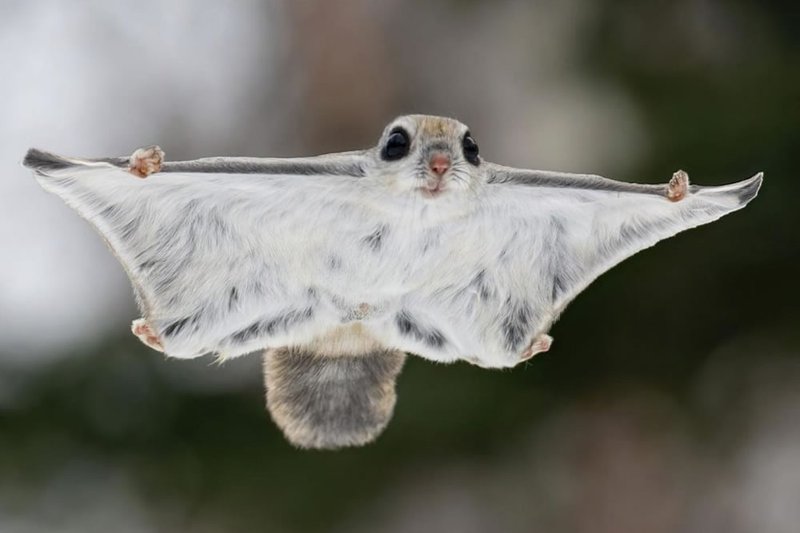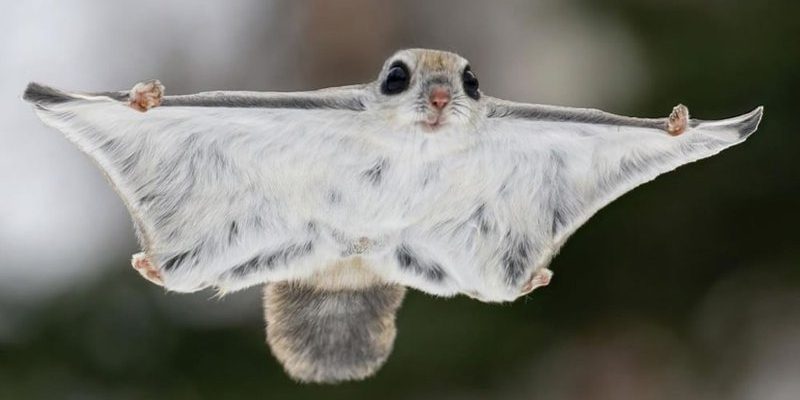
Imagine sipping your morning coffee while reading about how nature shapes our narratives. The flying squirrel, with its unique adaptations and charming appearance, often symbolizes playfulness, freedom, and the mysteries of the night. Their ability to soar gracefully from tree to tree makes them a fitting subject for stories that explore themes of adventure and connection. So, let’s dive into the enchanting world of flying squirrels and discover how they have been represented in culture and folklore around the globe.
Symbolism of the Flying Squirrel in Different Cultures
The flying squirrel isn’t just a creature of the night; in various cultures, it embodies specific meanings. For many Native American tribes, these animals symbolize adaptability and resourcefulness. Their ability to glide through the trees represents a connection between the earth and the sky, making them a bridge between the physical and spiritual worlds. This idea is often reflected in storytelling, where flying squirrels appear as clever characters, helping others by using their unique talents.
In Eastern cultures, particularly in Chinese folklore, flying squirrels are seen as symbols of good fortune and prosperity. Their agility and grace are admired, and they are often included in art and poetry to portray a sense of harmony with nature. The idea is simple yet profound: just as these creatures thrive in their environment, so too can people find success and happiness by respecting the world around them.
You might be wondering how these cultural representations impact our view of flying squirrels today. In essence, they remind us to appreciate the subtleties of nature and the lessons we can learn from it. Whether it’s the agility of the flying squirrel or the importance of community and adaptability, these stories have much to share.
Flying Squirrels in Folklore and Mythology
Folklore is rich with creatures that defy the ordinary, and flying squirrels are no exception. In some tales, they are depicted as magical beings capable of traversing realms. For instance, in certain Native American stories, flying squirrels are said to possess the ability to communicate with the spirits of the forest. This connection allows them to guide lost souls or deliver messages, reinforcing their role as guardians of the woods.
In Asian folklore, particularly in Japan, flying squirrels appear as playful spirits. They are often described in stories where they assist heroes on quests, using their gliding abilities to navigate difficult terrains. Their playful nature captures the imagination, making them endearing characters that help convey moral lessons or highlight human qualities like bravery and cunning.
These tales not only entertain but also serve to connect communities with their environment. Flying squirrels become symbols of the harmony that can exist between humans and nature, encouraging respect and admiration for the wild.
Literature and Art Featuring Flying Squirrels
Flying squirrels have found their way into literature and art, where they often represent freedom and a sense of adventure. Many children’s books feature these enchanting creatures, illustrating the joy of exploration and the thrill of discovery. For example, in works like “The Tale of Squirrel Nutkin” by Beatrix Potter, the charm of flying squirrels draws in young readers, teaching them about nature while sparking their imagination.
In visual arts, especially in cultures that honor wildlife, flying squirrels are often depicted in vibrant paintings and sculptures. Artists use their unique features—such as their large, expressive eyes and fluffy tails— to symbolize vitality and playfulness. The act of gliding becomes a metaphor for the joys of life, reflecting the beauty and mystery of the natural world.
Moreover, flying squirrels also play a role in modern environmental art, where they remind us of the importance of conserving wildlife and preserving natural habitats. This type of art often urges viewers to reflect on their relationship with nature, pushing for awareness of wildlife conservation.
Lessons from Flying Squirrels: Nature’s Teachers
Flying squirrels have important lessons to teach us. Their agility and adaptability can inspire us to embrace change and navigate life’s challenges. Just as they glide gracefully through their environment, we too can learn to flow with the changes around us.
These creatures also emphasize the value of community. Flying squirrels are often seen in groups, highlighting the importance of social connections. In the same way, humans thrive on relationships and collaboration. Their behavior encourages us to nurture our bonds with others, reminding us that we’re stronger together.
Additionally, flying squirrels can remind us to be curious and adventurous. As they explore the world around them, we can also seek out new experiences and learn from them. This sense of adventure is vital for personal growth, helping us break out of our comfort zones and discover our potential.
Modern Representation of Flying Squirrels
Today, flying squirrels are often featured in wildlife documentaries and conservation campaigns. These programs showcase their unique behaviors, emphasizing their importance in ecosystems. By portraying these creatures in an engaging way, filmmakers and conservationists aim to raise awareness about habitat preservation and biodiversity.
Social media has also played a role in popularizing the flying squirrel. With their adorable looks and playful actions, videos of flying squirrels gliding and interacting with humans have gone viral. This newfound popularity has sparked interest in wildlife conservation, inspiring people to learn more about these fascinating creatures and their habitats.
Furthermore, the symbolism of freedom associated with flying squirrels resonates with many contemporary movements focused on environmental sustainability and wildlife protection. As we advocate for a healthier planet, the flying squirrel stands as a reminder of the beauty of nature and our responsibility to protect it.
The flying squirrel, with its unique adaptations and enchanting qualities, holds a special place in cultural narratives and folklore. Through tales of wisdom, agility, and adventure, flying squirrels inspire us to connect with nature and each other. As we read about them in stories, view them in art, or watch them glide across the screen, we are reminded of the lessons they impart: to be adaptable, to cherish community, and to embrace the wonders of life.
In today’s fast-paced world, let’s take a moment to appreciate these remarkable creatures and their place in our cultural fabric. Just like the flying squirrel, we have the capacity to glide through challenges, reach new heights, and soar toward the possibilities ahead. So next time you encounter a flying squirrel—whether in a story, artwork, or maybe even in your backyard—remember the magic and meaning they bring to our world.

